Tender Slow Cooker Korean Beef takes just 10 minutes to prep for a salty and sweet asian beef perfect for a weeknight dinner. Serve over rice or noodles.
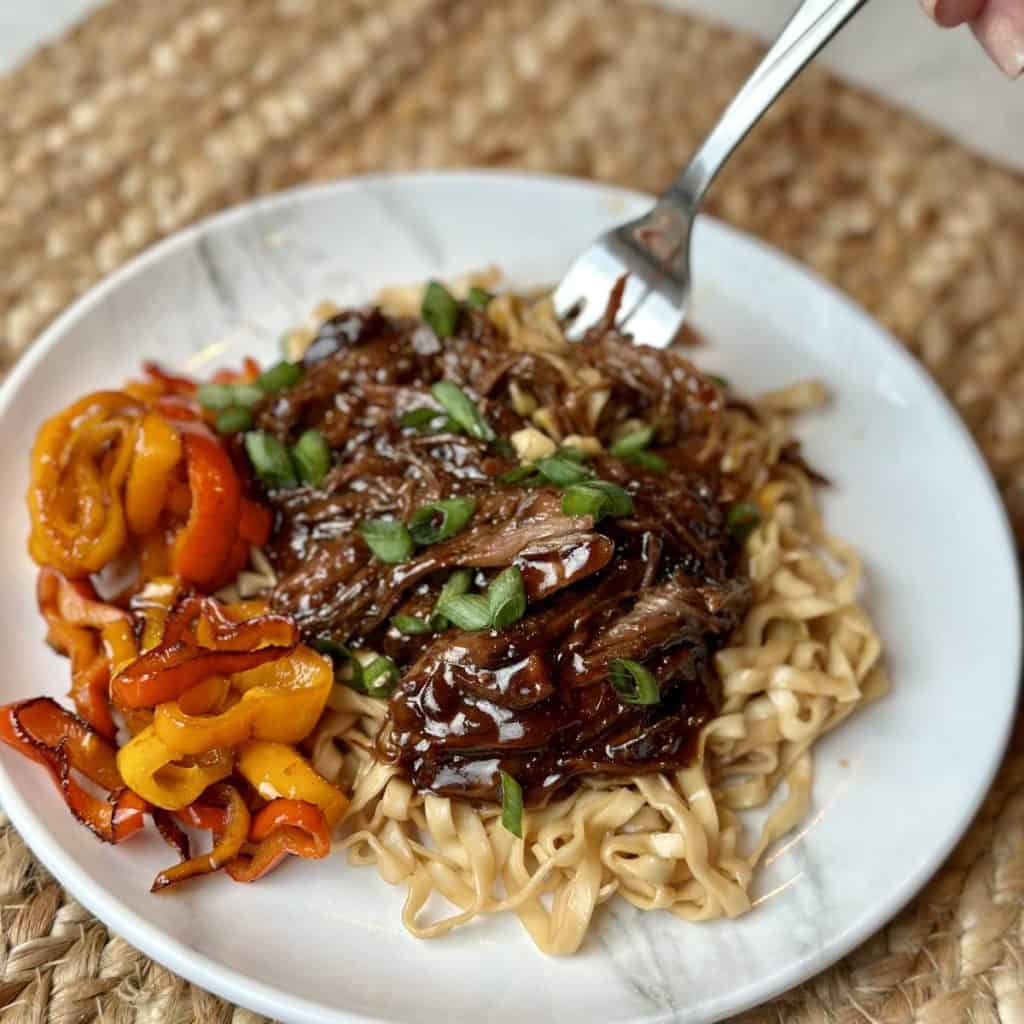
A nearly hands-off dinner that comes together in a matter of a few minutes is my go-to on busy weeknights. This savory and sweet sauce Asian-inspired beef dish is on frequent rotation. Incredible tender beef served over a bed of rice or noodles with some cooked vegetables, it's a complete meal your family is sure to love!
If you love the flavors of Asian food, Crockpot Asian Pulled Pork Sliders and Korean BBQ sandwiches are some dishes I would recommend! Want to turn some of those classic flavors into a casserole? Try this simple and flavorful Teriyaki Chicken and Rice Casserole! These recipes would all be perfect for busy weeknights!
Save The Recipe!
Add your email below and we’ll send it straight to your inbox+ you’ll receive all our newest recipes!
Table of Contents
Why You'll Love this Recipe
- Minimal Prep Time: This is one of the best things about this easy crock pot dinner recipe. With an optional quick sear and mix of ingredients, it’s an excellent set-it-and-forget-it that will leave you only needing to make you noodles, rice, and/or vegetables.
- Make It Your Own: The heat and flavors in my Slow Cooker Korean beef recipe can easily be adapted to your palates preference.
- Leftovers to Look Forward To: This dish is so delicious that you’ll be anxiously awaiting to reheat them for lunch or another dinner!
- Comfort Food Classic: Fall-apart juicy beef on tender noodles or rice has all the qualities of a cozy meal! You'll look forward to this delicious recipe all day!
What is Flank Steak and Chuck Roast?
Flank steak is a popular cut of beef known for its rich flavor and relatively lean texture. It is a flat and long cut of meat that comes from the abdominal muscles of the cow, specifically the lower chest or abdominal area. Flank steak is flavorful but can be tougher compared to some other cuts of beef because it contains long muscle fibers.
Chuck roast is a cut of beef that comes from the shoulder area of a cow. It is known for its rich flavor and tenderness, especially when cooked slowly. It’s a popular choice for pot roast, stews, and braised dishes because it contains a good amount of marbling, which adds moisture and flavor during cooking.
Both of these cuts are a great option in this dish as slow cooking suits them best!
Ingredients
- Flank Steak or Chuck Roast: Provides the main protein base for the dish.
- Reduced-Sodium Soy Sauce: Provides saltiness and umami. It's the primary seasoning agent and contributes to the overall savory profile of the dish.
- Sesame Oil: Imparts a nutty aroma and a depth of flavor.
- Onion: Adds a subtle sweetness and depth to the dish and enhances the overall texture.
- Brown Sugar or Brown Sugar Substitute: Balances the saltiness of the soy sauce with a touch of sweetness and adds depth and richness to the marinade.
- Crushed Red Pepper Flakes: Adds a subtle kick of heat.
- Cornstarch: Thickens the sauce enhancing the texture and overall presentation of the dish.
- Garlic Powder: Infuses the dish with a deep, earthy flavor. Garlic adds aromatic complexity and a savory undertone to the marinade.
- Beef Broth: Provides a richer, more flavorful sauce and ensures the meat remains moist and tender.
- Optional Additions and Garnishes: Rice, Noodles, Vegetables, Sliced Green Onions, Sesame Seeds
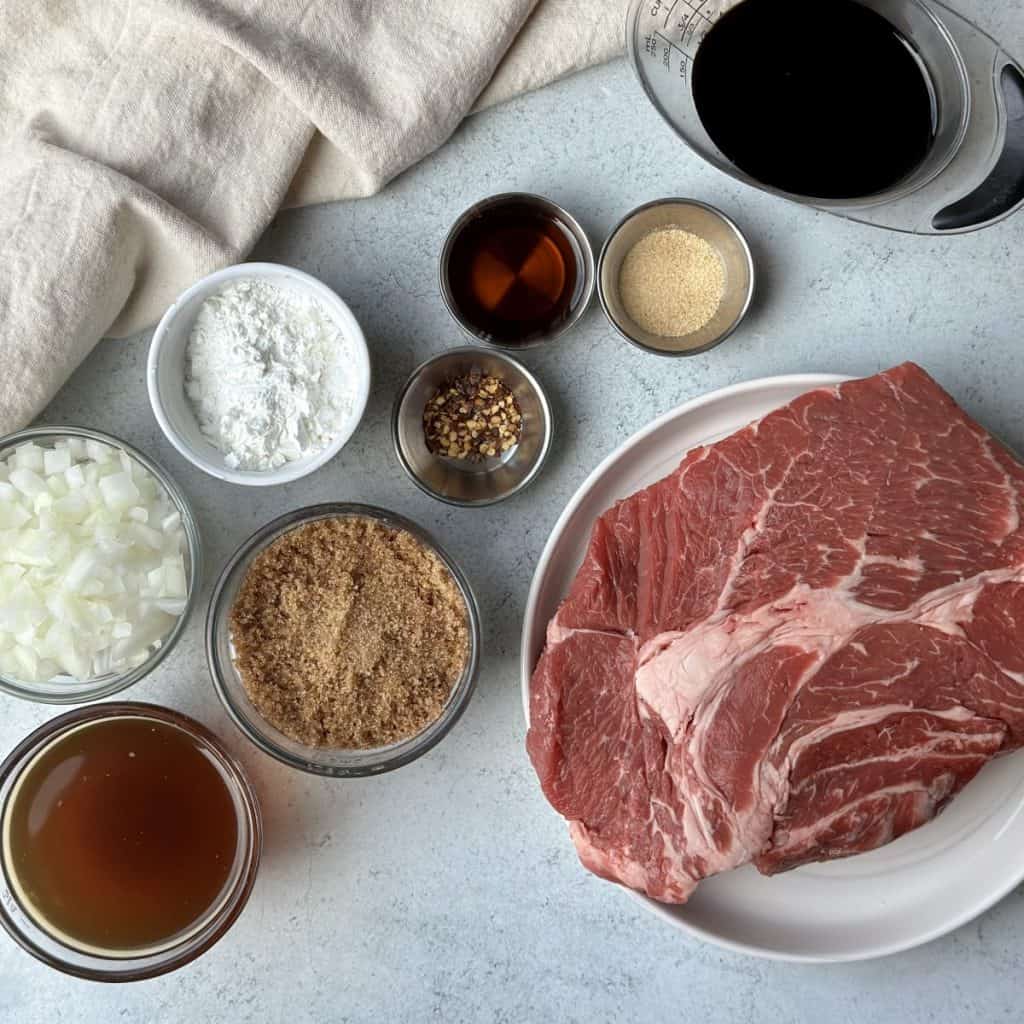
Tools You'll Need
- 6 or 8 Quart Crockpot
- Large Skillet
- Measuring Cups and Spoons
- Liquid Measuring Cups
- Rice Cooker (optional)
How to make Slow Cooker Korean Beef
- Searing the meat first is optional. If doing so, it's also optional to salt and pepper both sides and sear in 1 tablespoon oil or butter. Sear 2 minutes per side.
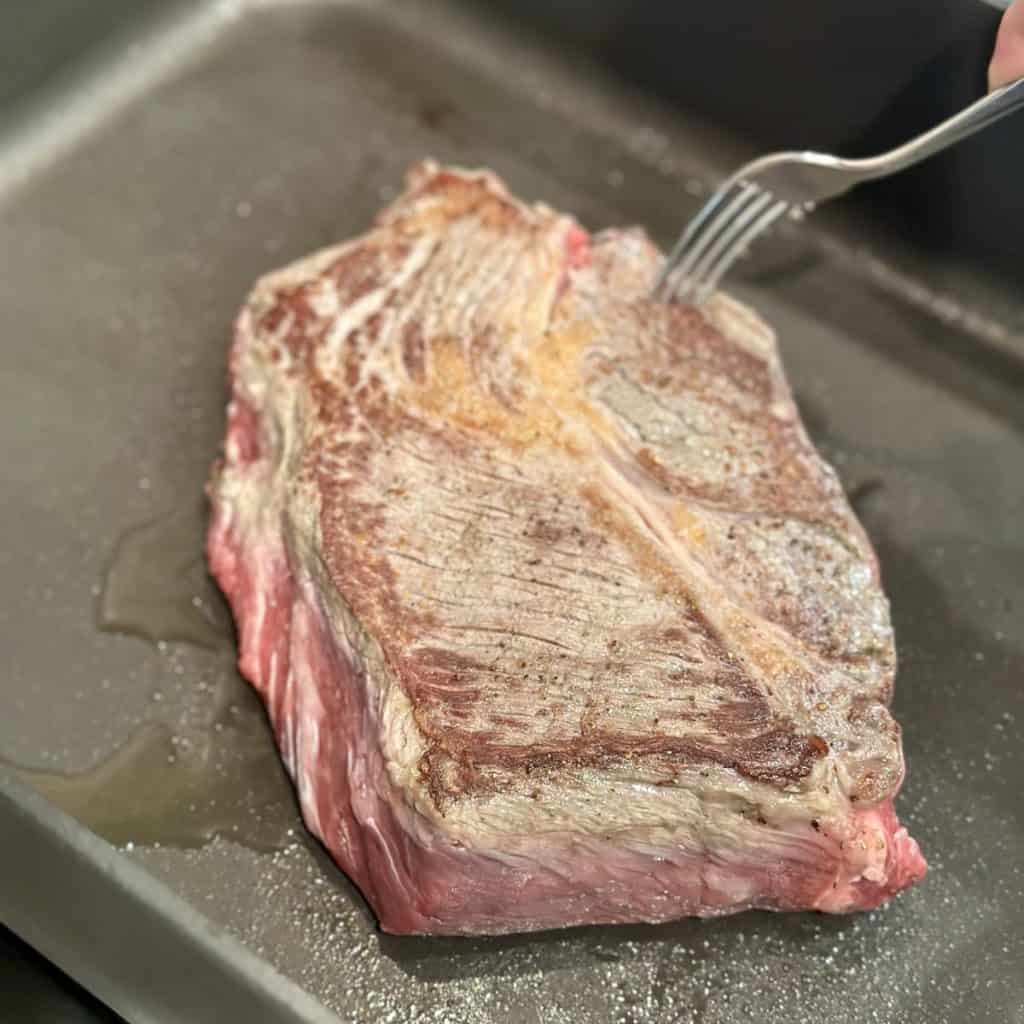
- To a Crockpot, add soy sauce, sesame oil, diced onion, brown sugar or brown sugar substitute, crushed red pepper flakes, cornstarch, garlic powder and beef broth Whisk until combined well.
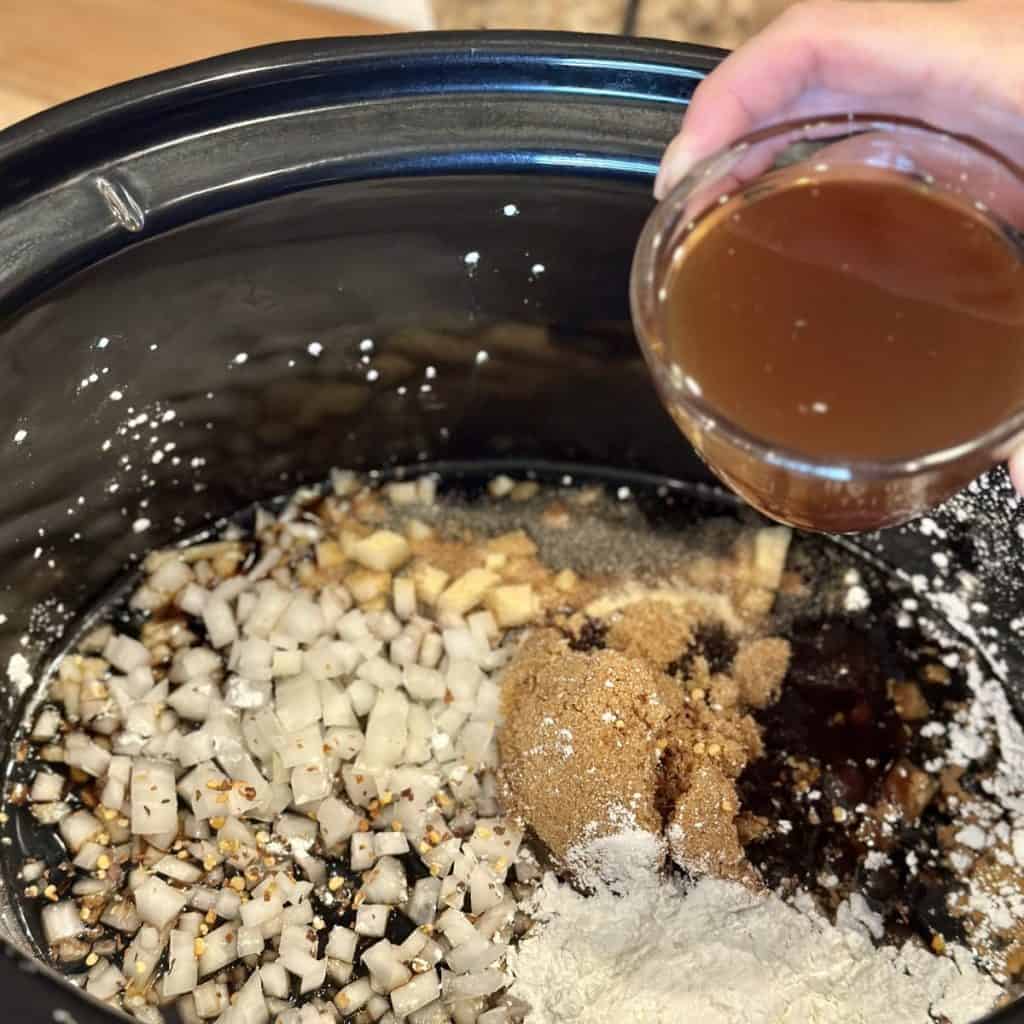
- Submerge the seared or non-seared beef. Cover and cook on low heat for 6-8 hours or on high heat for 3-4 hours.
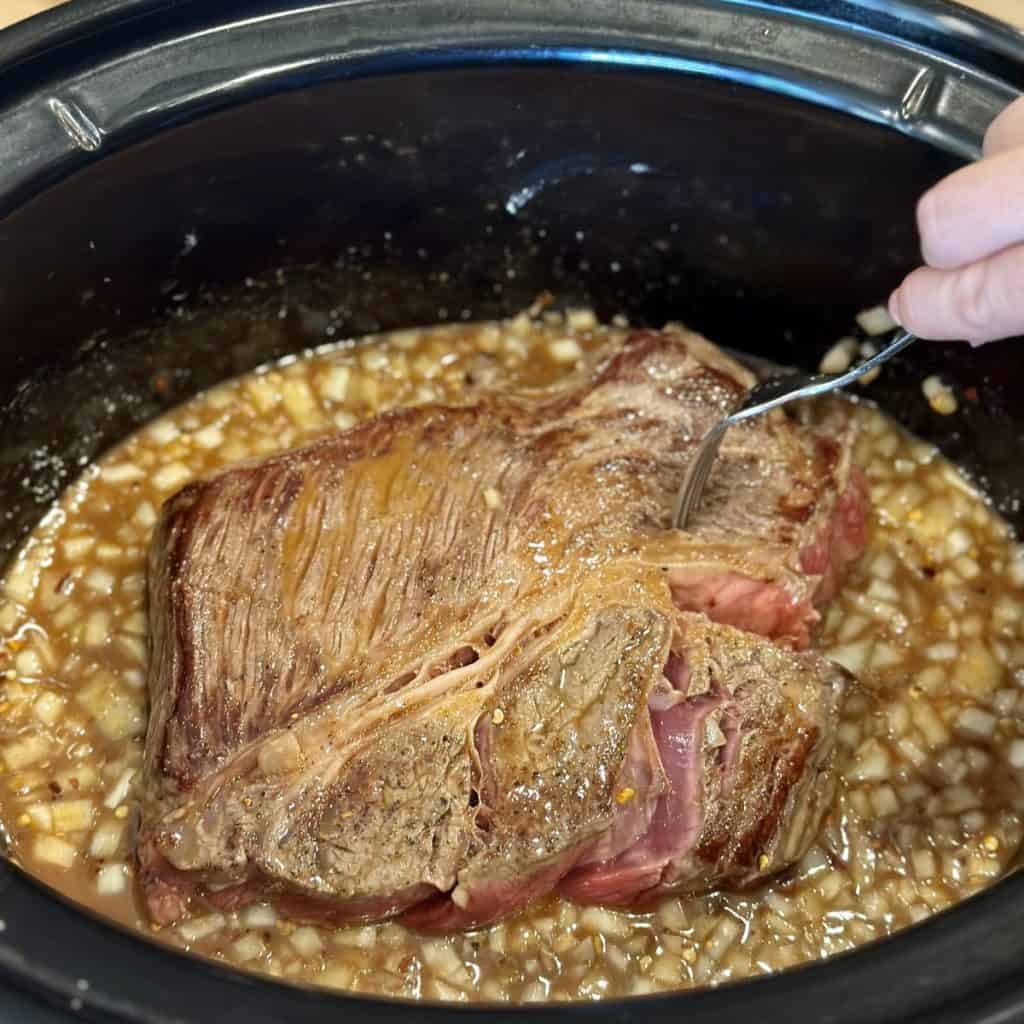
- Transfer the meat to a cutting board and shred with 2 forks. Return the meat to the crockpot to reheat for 10 minutes.
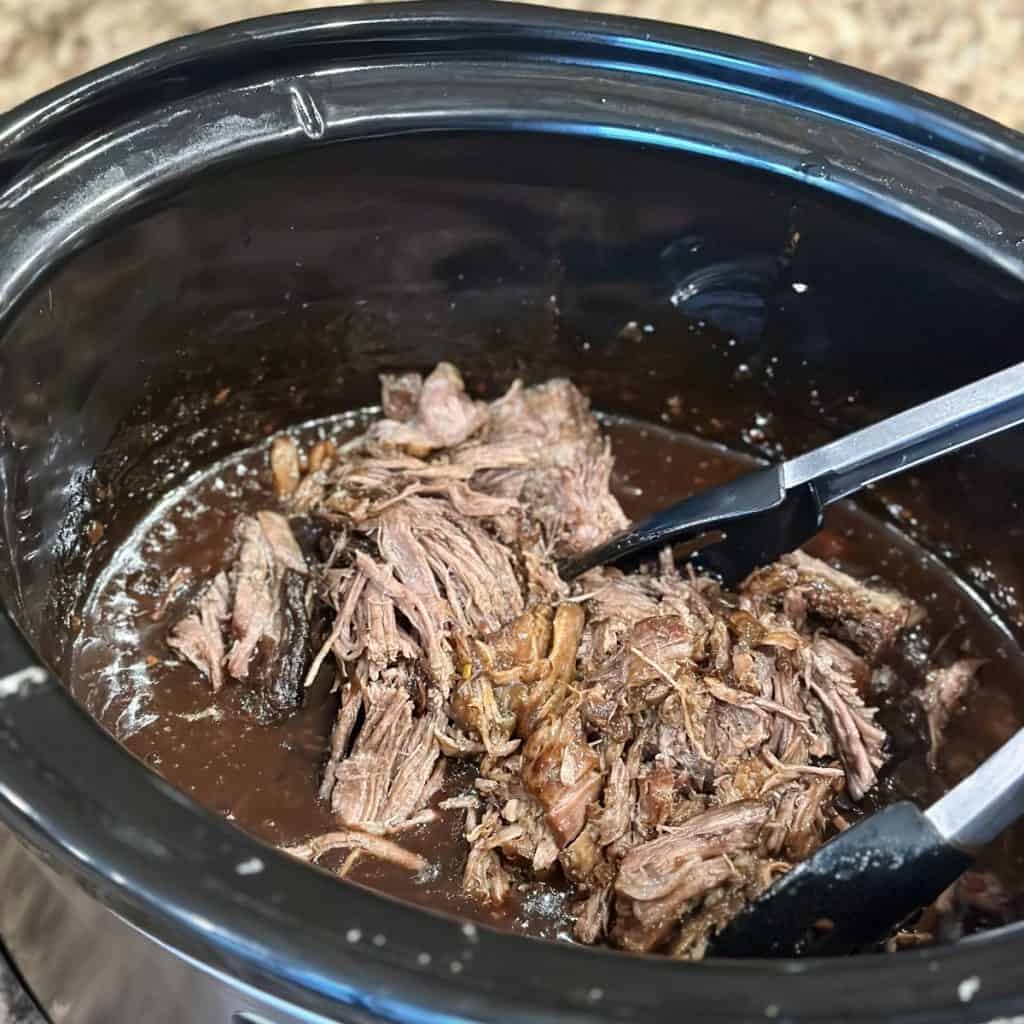
- Serve over rice, noodles, and/or vegetables
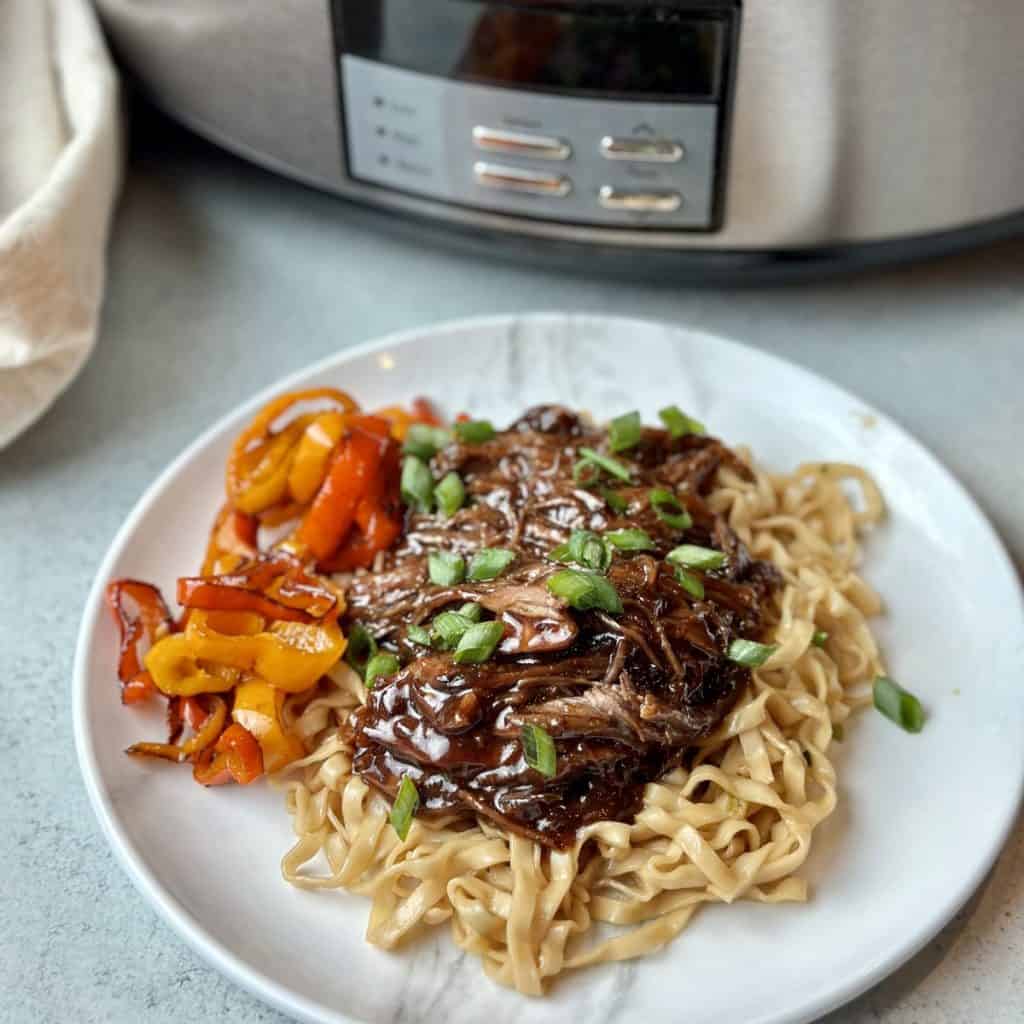
Tips and Variations
- Texture Adjustments:
- If your sauce is too thin, simply add a mixture of 1-2 tablespoons cornstarch and 1-2 tablespoons water or beef broth. If your mixture is too thick, stir in additional beef broth to your desired texture.
- Beef Substitutions:
- If you can’t find chuck roast or flank steak, you can also use sirloin steak, or stewing beef. Adjust the cooking time according to the cut you choose.
- Soy Sauce Substitutions:
- Low-sodium soy sauce, tamari, or coconut aminos can be used if you’re watching your sodium intake. Tamari is a good substitute for a gluten-free version.
- Brown Sugar Substitutions:
- Honey or maple syrup can replace brown sugar for a different kind of sweetness. Adjust the quantity to taste.
- Sesame Oil Substitutions:
- Toasted sesame oil provides a stronger flavor than regular sesame oil. Use it sparingly or mix it with a neutral oil like canola or vegetable oil if you find its taste too intense. A sprinkle of sesame seeds is a nice touch as well.
- Spice Level:
- If you prefer a milder dish, reduce or omit the crushed red pepper flakes. For an extra kick, add a pinch of cayenne pepper.
- Vegetable Additions:
- Enhance the dish with vegetables like bell peppers, carrots, or broccoli. Add them in the last hour of cooking to maintain their texture. Pickled red onion is another great topper.
What to serve with Delicious Korean Beef
I try to always have a balance of a protein, starch, and vegetable at each dinner. For this meal, we love serving the tender been over a bed of white rice, brown rice, cauliflower rice, mashed potatoes, noodles, or a whole grain blend. Garlic Broccoli and Mushrooms, Easy Cooked Vegetables or Crispy Green Beans or my go-to vegetable pairings.
You can also use this delicious crock pot Korean Beef as Korean tacos in corn or flour tortillas, lettuce wraps, or Korean beef bowls.
My personal favorite way to have this dish is as Korean beef tacos or over Momofuku Noodles.
Storage and Freezing
Refrigerations: Allow the Korean beef to cool down to room temperature before refrigerating. Place in an airtight container in the refrigerator up to 3-5 days.
Freezing: Allow the Korean beef to cool completely in the refrigerator before freezing. Freeze in portions or in one freezer-safe food storage container up to 2-3 months.
Thawing: To thaw frozen Korean beef, transfer it from the freezer to the refrigerator and let it thaw overnight. Reheat in a saucepan on the stove over low to medium heat. You can add a little water or beef broth to prevent it from drying out. Stir occasionally and heat until the beef is thoroughly warmed.
Frequently Asked Questions
For best results, it's recommended to thaw beef thoroughly in the refrigerator before adding it to the slow cooker. Frozen meat takes longer to reach a safe cooking temperature in a slow cooker. This prolonged period in the u0022danger zoneu0022 (40°F to 140°F or 4°C to 60°C) can allow bacteria to multiply, potentially leading to foodborne illness.
You can do this by placing the frozen beef in the refrigerator a day or two before you plan to cook it. If you need to thaw it more quickly, you can use the defrost setting on your microwave or place the meat in a sealed plastic bag and submerge it in cold water, changing the water every 30 minutes until the meat is thawed.
Yes Instant Pot Korean Beef and Stovetop Korean Beef made in a dutch oven are both delicious methods of making this dish!
Bell peppers, carrots, mushrooms, zucchini, broccoli, snow peas, spinach, bok choy, green beans, or bean sprouts could be added to this dish. When adding vegetables, consider the cooking time of each vegetable. Some need the last hour of cooking, while some will only need 15-30 minutes.
Serving Korean beef is all about complementing its rich flavors and tender texture. Some popular and delicious ways to serve Korean beef is over steamed rice, in lettuce wraps, over noodles, or with kimchi. Adding non-starchy vegetables adds texture, color, nutrients, and flavor.
Yes, you can make Asian-inspired beef dishes without using sugar or sugar substitutes. While sugar is often used in Asian cooking to balance flavors and create a slightly sweet taste, there are alternative ways to achieve a similar depth of flavor without adding sugar such as hoisin sauce, fruit purees, and the natural sweetness from vegetables.
Two vegetarian recipes that glean on the flavors and textures of this dish Vegan Bulgogi (Korean BBQ) and Vegetarian Korean Beef.
It's a good idea to always check the labels of the products you're using to ensure it's gluten-free. The soy sauce in this recipe is not gluten-free, but you can easily swap it with a gluten-free alternative such as Kikkoman Gluten-Free Soy Sauce, Tamari, and Coconut Aminos.
More Crockpot Recipes
- Crockpot Tomato Basil Chicken
- Crockpot Chicken and Gravy
- Crockpot Chicken Teriyaki
- Crockpot Mongolian Beef
Slow Cooker Korean Beef
Ingredients
- 2-2 ½ pounds flank steak or chuck roast
- ½ cup reduced-sodium soy sauce
- 2 tablespoons sesame oil
- 1 cup diced onion
- ¾ cup brown sugar or substitute
- ½-1 teaspoon crushed red pepper flakes
- ¼ cup cornstarch
- 1 teaspoon garlic powder
- 1 cup beef broth
- Optional additions and garnishes: rice, noodles, cooked vegetables, sesame seeds, green onions
Instructions
- Searing the meat first is optional. If doing so, it's also optional to salt and pepper both sides and sear in 1 tablespoon oil or butter. Sear 2 minutes per side.
- To a Crockpot, add soy sauce, sesame oil, diced onion, brown sugar or brown sugar substitute, crushed red pepper flakes, cornstarch, garlic powder and beef broth Whisk until combined well.
- Submerge the seared or non-seared beef.
- Cover and cook on low for 6-8 hours or on high for 3-4 hours.
- Transfer the meat to a cutting board and shred with 2 forks.
- Return the meat to the crockpot to reheat for 10 minutes.
- Serve over rice, noodles, and/or vegetables
Video
Notes
- Beef Substitutions:
- If you can’t find chuck roast or flank steak, you can also use sirloin, or stewing beef. Adjust the cooking time according to the cut you choose.
- Soy Sauce Substitutions:
- Low-sodium soy sauce, tamari, or coconut aminos can be used if you’re watching your sodium intake. Tamari is a good substitute for a gluten-free version.
- Brown Sugar Substitutions:
- Honey or maple syrup can replace brown sugar for a different kind of sweetness. Adjust the quantity to taste.
- Sesame Oil Substitutions:
- Toasted sesame oil provides a stronger flavor than regular sesame oil. Use it sparingly or mix it with a neutral oil like canola or vegetable oil if you find its taste too intense.
- Spice Level:
- If you prefer a milder dish, reduce or omit the crushed red pepper flakes. For extra heat, add a pinch of cayenne pepper.
- Vegetable Additions:
- Enhance the dish with vegetables like bell peppers, carrots, or broccoli. Add them in the last hour of cooking to maintain their texture.


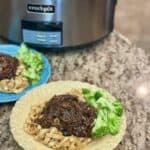
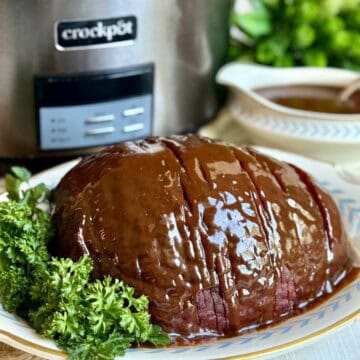

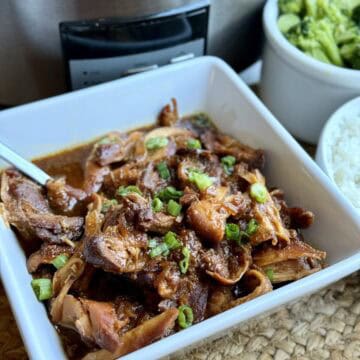
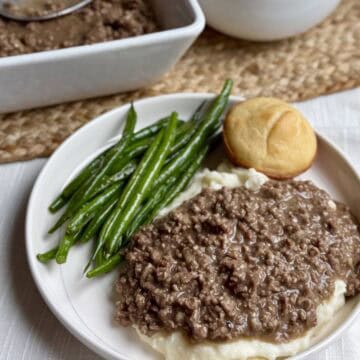

Teresa Long
I made this today. It is delicious. My husband loved it. I love trying your recipes and seeing your family.
Laura Ashley
That is fantastic, Teresa! Thank you SO much! I'm so happy you and your family liked it! I hope you love many more!
Emily Williams
Can't wait to try it. I have two sons born in Korea and they will love this. Thanks for sharing. I enjoy your recipes!
Laura Ashley
Aww!! You're very welcome and thank you so much as well!! I hope you and your sons love it too!
Michelle K
Absolutely delicious! So easy to make on a weeknight . Thank you for the delicious recipe . My family said this is a keeper & im hired to cook next week !
Laura Ashley
You're so sweet! Thank you SO much!! 🙂 I'm so happy you and your family liked it so much!!
Kim Columbus
Oh my gosh this dish was AMAZING! I absolutely love when i try something new and it turns out better than expected! I’ve tried other dishes of Laura’s and they’re always delicious! I did mine over rice noodles that i sautéed with a bit of the liquid from the crock pot and some sweet peppers! OMG SOOOO YUMMMM!!!! Will try it over rice next time! Already shared this recipe with my family !
Laura Ashley
Awwww!! That makes my heart so happy to hear!! Thank you SO much!!!🥰 You're so sweet! It means a lot to me that you and your family like my recipes!
Lindsay
In the crockpot for tomorrow! I can’t wait to try this…your recipes do not disappoint!
Laura Ashley
It means so much to me that you make them and like them so much!!!
Lindsay
It’s prepped and ready to start cooking in the morning. The sauce smells amazing, and I can’t wait to try it. Your recipes are always delicious!
Laura Ashley
Awwww!! That makes my heart so happy to hear!! Thank you SO much!!!🥰
Allison Boyster
Absolutely delicious!!! My boys loved it! We had it over rice.
Laura Ashley
Awwww!! That makes my heart so happy to hear!! Thank you SO much!!!🥰